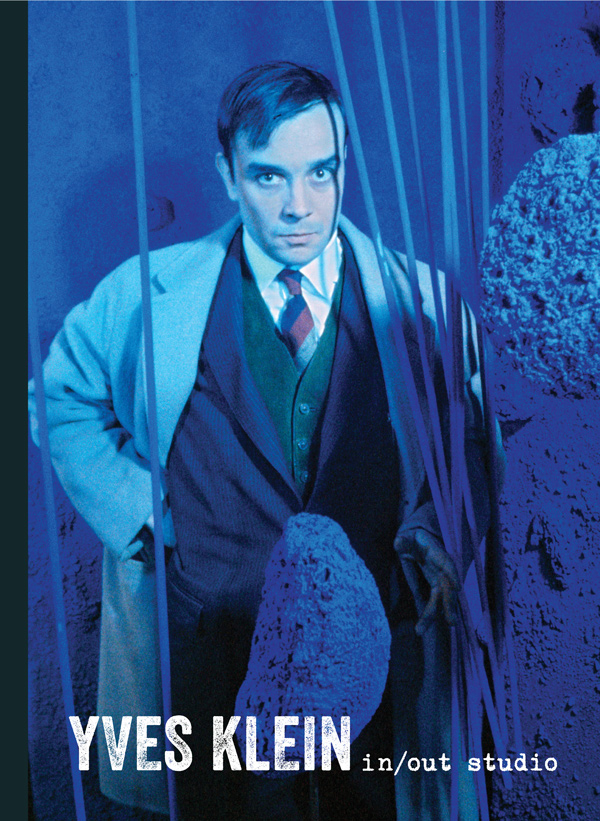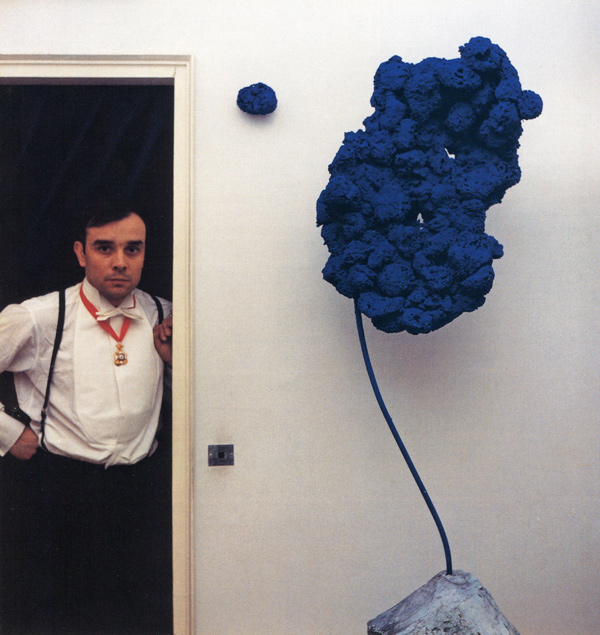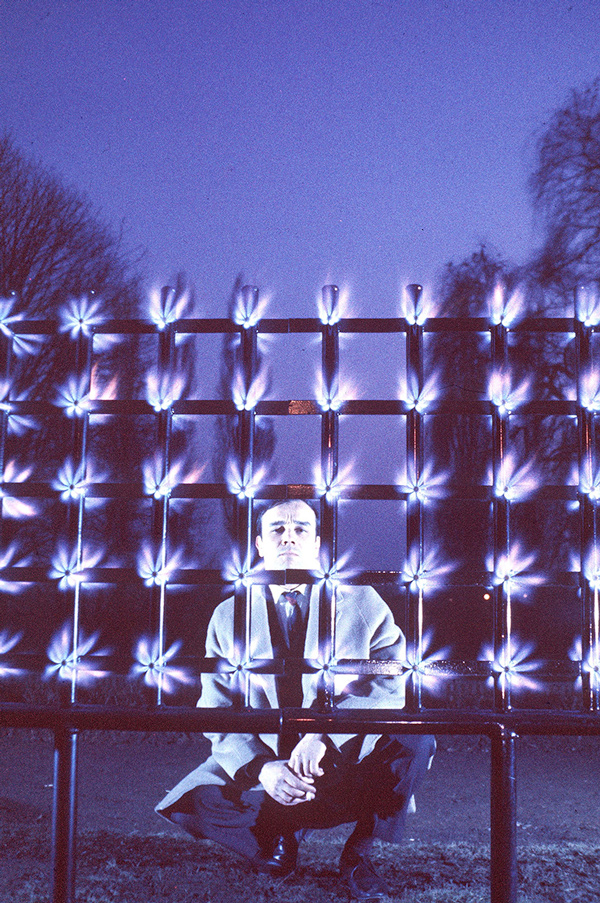Yves Klein is having a moment. If one goes to the news section of the Yves Klein Archives, one will notice that there has recently been a discernible uptick in the number of recent exhibitions of his work. Given that he died in 1962—at an unexpectedly young age—this might be a case of better late than never. His actual art career only lasted for eight years, but everything he produced was groundbreaking.
This online archive also maintains a detailed timeline of Klein’s biographical and artistic development. He was born in 1928, the same year as Andy Warhol. Both of his parents were successful painters, so he was no stranger to the French art establishment. One of the things he was known for was controlling his public image. In a world where cameras were not yet ubiquitous, he selected which photographers would document his actions. As much of his work had a conceptual element (painting with nude women and fire, simulated leaping from windows, trademarking colors), photography was an important element.
Shortly before the heart attacks that eventually took his life (the first one occurred at Cannes while he was watching himself in Mondo Cane) he co-authored a manifesto that many historians now interpret as an early iteration of pop art. Given his natural charisma and choice of compatriots (Christo and Jean Tinguely to name two), one might make a case for a more exciting Parisian ’60s art scene had he lived longer.

Klein’s moment has arrived with multiple monographs, and there are numerous choices. D.A.P. Art Book has just released theirs. If the name rings a bell it might be because this is the same publisher that reproduced Marcel Duchamp’s Boîte-en-valise. Book collectors compare the quality of their editions to the Criterion DVD releases.
This edition certainly makes a case for being definitive. The authors managed to track down the key photographers who documented Klein and they are generous with the images. In addition to numerous scenes of his life, work and exhibitions, there is an occasional contact sheet. When he is painting with fire or using nude bodies as paint brushes, these give one a sense of moving images. Although the biographical text only takes up a few pages, it is augmented with rare photos. An early chapter deals with his judo adventures (he obtained a black belt and taught judo) and reproduces key images from the book he produced about it. Maps are used quite effectively to give a sense of his early travels.

As his art career commences, the book displays what complete access the authors had to the Klein archive. His first art volley: a monograph of monotone paintings with an introduction of blacked-out text is reproduced in full. Rare performative photos are interspersed with finished artworks and relevant quotes. By the time one has turned all 300 pages, one is left with a sense of both how vital those eight years were, and what his early demise stole from the art world. As time provides us with more perspective, Klein’s importance is being reassessed. And there is much to assess.



















0 Comments